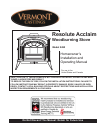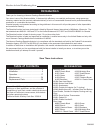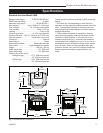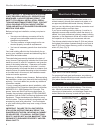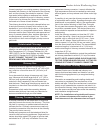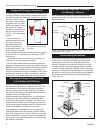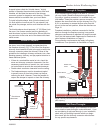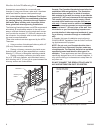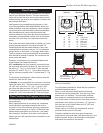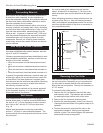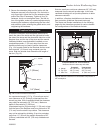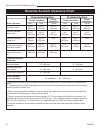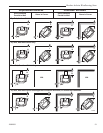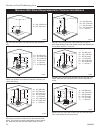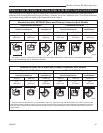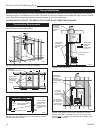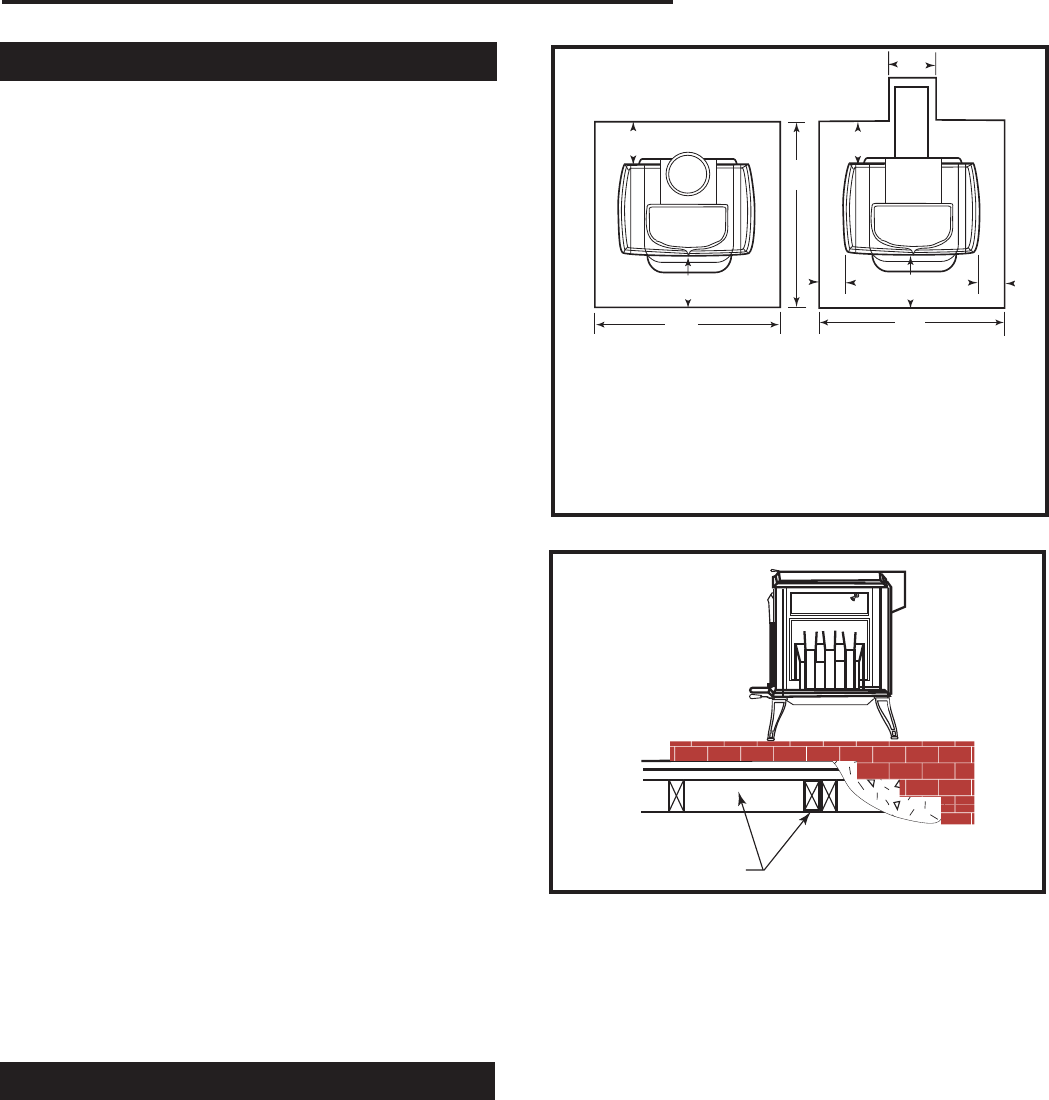
9
Resolute Acclaim Woodburning Stove
2000893
Floor Protection
A tremendous amount of heat radiates from the bottom
plate of your Resolute Acclaim. The floor area directly
under and around the stove will require protection from
radiant heat as well as from stray sparks or embers that
may escape the firebox.
Heat protection is provided through the use of a Ver-
mont Castings Bottom Heat Shield #0246. Spark and
ember protection must be provided by a floor protector
constructed with noncombustible material as specified.
Most installations will require that the bottom heat
shield be attached. Only when the stove is placed on a
completely noncombustible surface such as unpainted
concrete over earth may it be used without the heat
shield.
Even when the bottom heat shield is installed, you must
provide special protection to the floor beneath. For
installations with the heat shield attached, use a non-
combustible floor protector such as 1/4” non-asbestos
mineral board or equivalent, or 24 gauge sheet metal.
The floor protector may be covered with a noncombus-
tible decorative material if desired. Do not obstruct the
space under the heater.
Protection requirements vary somewhat between the
United States and Canada as follows:
U.S. installations the floor protector is required under
the stove and must extend at least 16” from the front of
the stove (“C”, Fig. 11), and at least 6” from the sides
and rear (“D” and “E”,Fig. 11). It must also extend un-
der the chimney connector and 2” to either side (“F”,Fig.
11).
To meet these requirements, a floor protector must be
at least 38” wide and 42” deep.
In Canada, a noncombustible floor protector is required
under the heater also. The floor protector must extend
18” (457 mm) to the front (“C”, Fig. 11), and 8” (203
mm) from the sides and rear (“D” and “E”, Fig. 11).
To meet these requirements, a floor protector must be
at least 42” (1067 mm) wide and 46” (1168 mm) deep.
Floor Protection for Fireplace Installation
Do not assume that your fireplace hearth is completely
noncombustible
Many fireplace hearths do not satisfy the “completely
noncombustible” requirement because the brick or
concrete in front of the fireplace opening is supported
by heavy wood framing as in Figure 12. Because heat
passes readily through brick or concrete, it can easily
pass through to the wood. As a result, such fireplace
hearths can be a fire hazard and are considered a com-
bustible floor.
For all fireplace installations, follow the floor protection
guidelines described above.
Keep in mind that many raised hearths will extend
less than the required clearance from the front of the
heater when it is installed. In such cases, sufficient
floor protection as described above must be added in
front of the hearth to satisfy the minimum floor protector
requirement from the front of the stove: 16” (410 mm)
from the front in the United States and 18” (457 mm)
from the front in Canada.
Hearth rugs do not satisfy the requirements for floor
protection as they are not fire proof.
Fireplace installations also have special clearance
requirements to the side walls, side decorative trim, and
fireplace mantel. Refer to the information on fireplace
and mantel trim shields in this section.
ST247
Rear exit floor dgrm
12/14/99 djt
RESO LU TE
Acclaim
Wood framing
requires protection
from radiant heat
ST247a
Fig. 12 Supporting timbers under fireplace hearth are consid-
ered to be combustible
E
C
A
B
E
A
C
F
ST500
intrepid
floor protection
11/10/00
D
D
U.S. Canada
A: 38” 42” (1067 mm)
B: 42” 46” (1168 mm)
C: 16” 18” (457 mm)
D: 6” 8” (203 mm)
E: 6” 8” (203 mm)
F: 10” 10” (254 mm)
Top Exit
Rear Exit
ST500
Fig. 11 Required floor protector dimensions.



